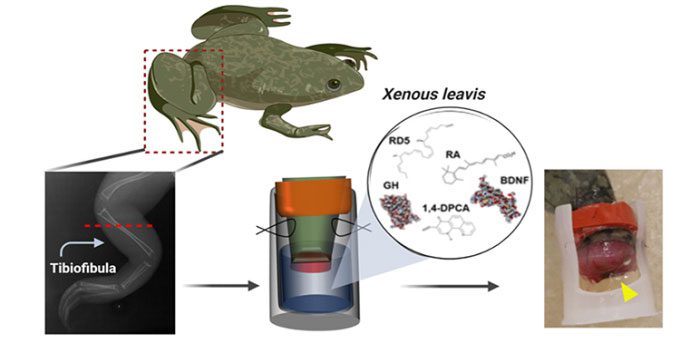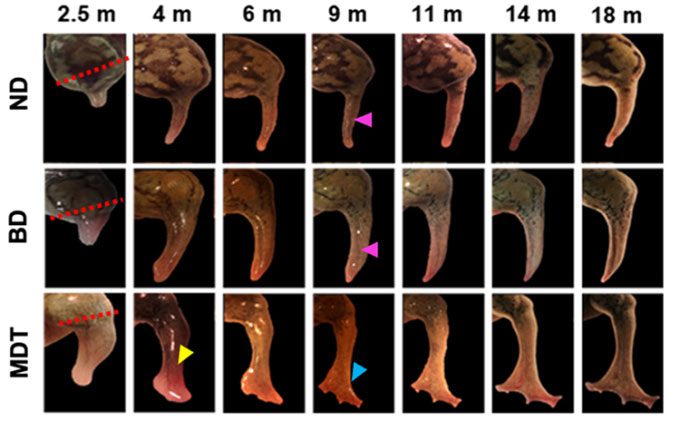Tufts University and Harvard University have discovered a way for frogs to regenerate limbs after 18 months, something that does not occur naturally.
Humans have the ability to close wounds by developing new tissue. The liver can even regenerate to full size after losing up to 50%. However, the loss of a large and complex limb—such as an arm or leg—cannot be restored through any natural regenerative process.
In fact, humans tend to cover large wounds with a mass of amorphous scar tissue, protecting it from further blood loss and infection while preventing further growth.
Meanwhile, many animal species are known to have the ability to regenerate at least some body parts, such as axolotls, starfish, crabs, and lizards. Flatworms can even be cut into multiple pieces, with each piece regenerating into a complete body.
In a new study published in the journal Science Advances on January 26, scientists from Tufts University and Harvard University successfully stimulated frogs to regrow nearly complete legs in the laboratory for the first time. The species tested was the African clawed frog (Xenopus laevis).

Simulation of the method to stimulate frogs to regrow legs. (Photo: Science Advances)
The research team wrapped the wound on the amputated limb of the creature with a special silicone tube called BioDome, which contained a protein gel and five different types of drugs. Each drug served a specific purpose, including reducing inflammation, inhibiting collagen production that leads to scarring, and encouraging the growth of new nerve fibers, blood vessels, and muscle. This combination created a localized environment conducive to regeneration.
The scientists observed robust tissue growth in many treated frogs, leading to the regeneration of a new leg that was nearly fully functional. These limbs had elongated bone structures with characteristics similar to those of natural limbs. Internal tissues, such as nerve cells, also developed. Some toes grew from the tip of the limb, but without the support of underlying bones.
Experiments showed that the regrown limbs were able to move and respond to stimuli. The treated frogs could use them to swim in water and move like a normal frog.
“It’s exciting to see that the drugs we selected helped create a nearly complete limb. The fact that it only required a short exposure to the drugs (24 hours) to initiate a long-term regeneration process (18 months)”, said the first author of the study, Nirosha Murugan at Tufts University.

The process of frogs regrowing legs after 18 months. (Photo: Science Advances).
Animal species with natural regenerative abilities mostly live in aquatic environments. The initial growth phase after losing a limb is the formation of stem cells at the end of the limb, which are used to regenerate the lost body part. The wound is quickly covered by skin cells within the first 24 hours after injury, protecting the regenerating tissue underneath.
“Mammals and land animals with regenerative capabilities often sustain injuries when exposed to air or land, so it may take them several days to weeks to close the scar tissue. Using the BioDome in the first 24 hours mimics an amniotic-like aquatic environment, along with the appropriate drugs, allowing the regeneration process to occur without the interference of scar tissue”, explained co-author David Kaplan, a professor at Tufts University.
The study also involved Michael Levin, a professor of biology at the School of Arts & Sciences at Tufts and a member of the Wyss Institute at Harvard University.





















































